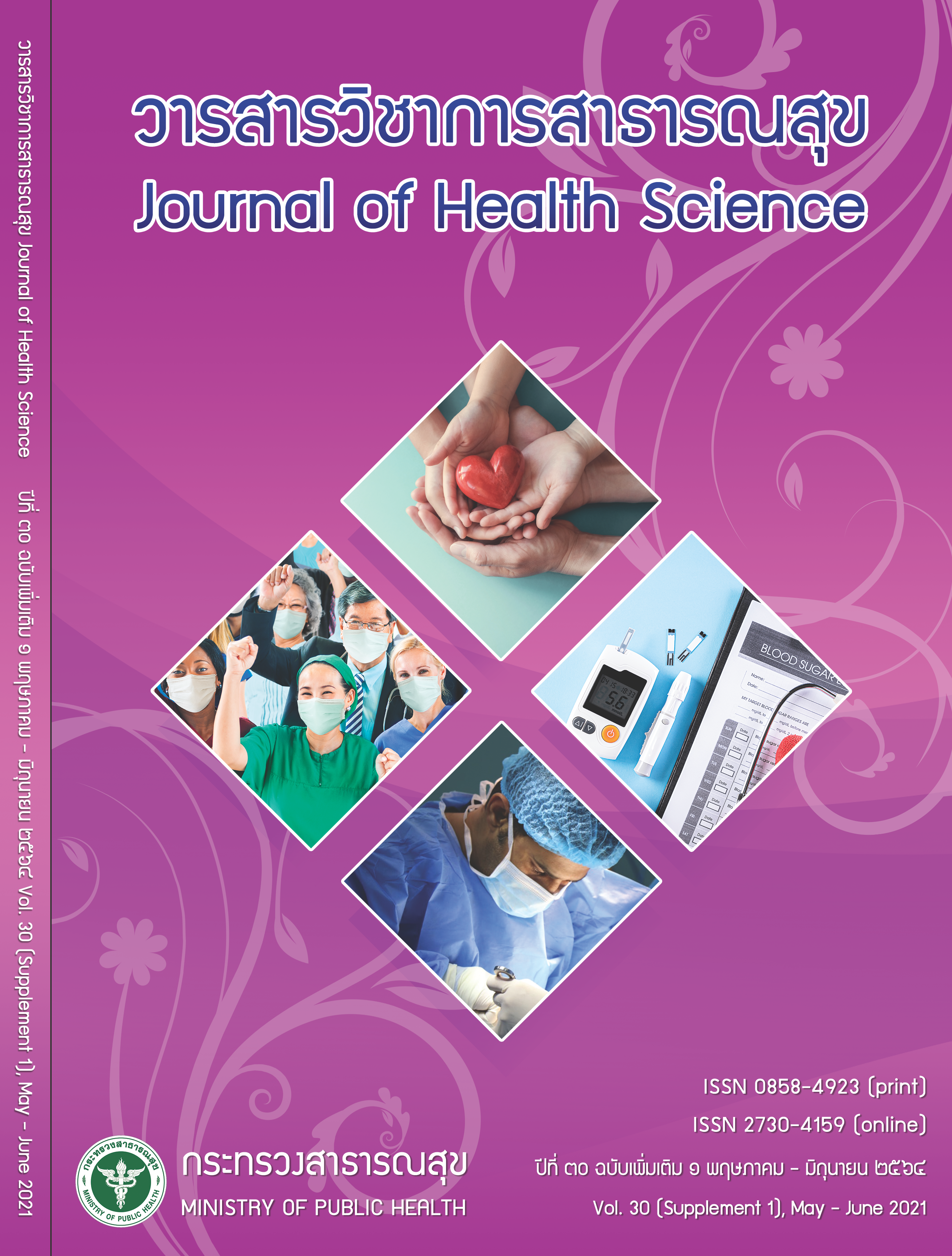Development of B–Soy Powder Produced with Soybean Meal for the Production of Biolarvicide Against Culex quinquefasciatus Larvae
Keywords:
Bacillus thuringiensis var. israelensis, Culex quinquefasciatus, soybean meal, biolarvicideAbstract
Bacillus thuringiensis var. israelensis (Bti) is a microbe found in natural soil that can produce insecticidal crystal proteins that causing death of mosquito larvae, thus Bti can be used to control Culex quinquefasciatus, a lymphatic filariasis vector. But the production of Bti is expensive because of the high cost of the culture medium. The objective of this study was to develop the Bti powder as a culture starter for the production of biolarvicide against Cx. quinquefasciatus larvae by using soybean meal as a bacterial culture medium. The obtained Bti cell pellets were dried at different test temperatures at 40° C, 50° C and 60° C. It was found that the optimal drying temperature was 40° C, because Bti powder or B-Soy powder produced highly effective mosquito larvicide with the lowest LC50 value. Two storage tests of B-Soy powder were conducted in vacuum bag and non-vacuum bag for three months. After 3 months storage, B-Soy powders were tested against Cx. quinquefasciatus larvae, the LC50 results obtained were 0.914 and 1.012 mg/l, respectively. The LC50 values were slightly higher than the original LC50 value of 0.879 mg/l, but not statistically significant. Thus, the 3-month storage of B-Soy powder in both vacuum and non-vacuum bags, they still maintain quality of B-Soy powder. However, after longer-term storage up to 6 months, B-Soy powder lost 3 to 5 times of its efficacy against Cx. quinquefasciatus, unsuitable for producing larvicide. The production of biolarvicide in 5 litre plastic containers was conducted to compare the effect of B-Soy powder at five levels (5, 10, 15, 20 and 25 g). The result indicated that at least 10 g of B-Soy powder provided the effective mosquito larvicide for the control of Cx. quinquefasciatus larvae. For cost calculation, it showed that biolarvicide produced from B-Soy powder was 29 times lower than the cost of biolarvicide produced from pure Bti cultured on standard media. Therefore, the B-Soy powder from a low-cost culture medium with soybean meal could be used as an effective alternative for the production of biological agent for the control of Culex mosquitoes. Furthermore, this knowledge production of biolarvicide was already transferred to village health volunteers in order to control Culex mosquito larvae in their own communities..
Downloads
Downloads
Published
How to Cite
Issue
Section
License

This work is licensed under a Creative Commons Attribution-NonCommercial-NoDerivatives 4.0 International License.







